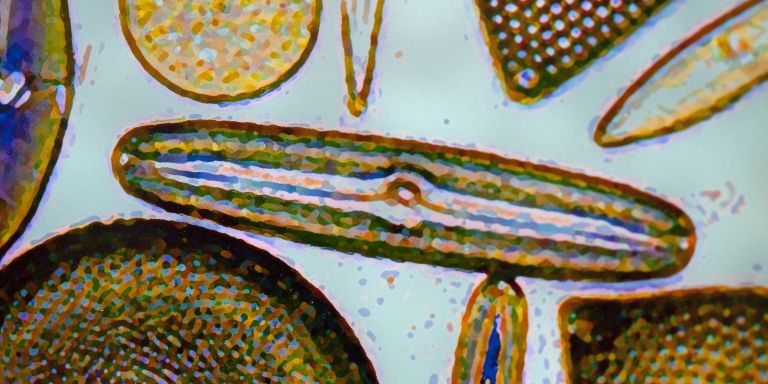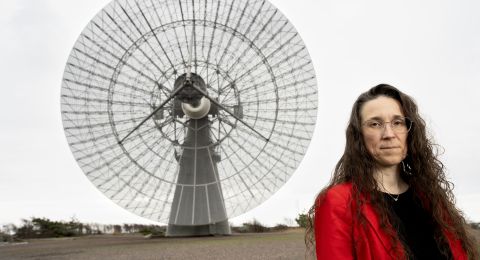Researchers at Lund University are mapping evidence in sediment at the bottom of the sea that is tens of millions of years old. This primordial geology can be tied to carbon dioxide concentrations in the atmosphere, something that can shed new light on the planet’s changes in climate.
Daniel Conley
Professor of Biogeochemistry
Wallenberg Scholar 2011
Institution:
Lund University
Research field:
Variations in the carbon dioxide content in the atmosphere over millions of years, in order to better understand climate changes and the greenhouse effect.
Also Baltic Sea research specializing in dead sea bottoms.
Many scientists around the world are eager to understand how the earth’s climate has changed throughout the time, and in this quest analyses of the weathering of rocks during millions of years play a key role, according to Daniel Conley, professor of biogeochemistry at Lund University.
“Today we have only limited knowledge of how the carbon dioxide content of the atmosphere has varied across long periods of time, and knowing more about this would be of great importance in achieving a detailed picture of the whole course of development.”
Now, with the distinction of being named a Wallenberg Scholar, Daniel Conley has the opportunity to embark upon a new research project. The idea is to chart geological processes up to 542 million years back in time. There are in fact strong links between the weathering of rocks and the concentration of carbon dioxide in the atmosphere.
When carbon dioxide moves from the atmosphere to the earth, a chemical process starts. Carbon dioxide affects the chemical composition of rocks, which begin to weather, transform and breakdown into elements dissolved in water. Therefore, the rate of decomposition of mineral types is an indication of how the carbon dioxide cycles function.
But this is not the only knowledge that this research project can contribute. In the course of evolution, organisms emerged that use silicon dioxide their shells or supporting structutes. Many of these species are found at the bottom of the sea.
“These include, among others, sponges and diatoms,” says Daniel Conley. “They take up enormous amounts of silicon dioxide and thereby change the concentration of silicon in the oceans. If there’s lots of silicon dioxide in the water, then they take up a lot, and vice versa. They can therefore be used as a litmus test to determine what the silicon concentration has looked like.”
The findings thereby tell indirect tales about changes in carbon dioxide content, since the link is so strong between carbon and silicon.

Analyzing fossils on the ocean floor
To obtain reliable figures, these researchers are using different approaches. One method is to examine traces that lie hidden in fossils, on the bottom of the seas and in cliffs. Daniel Conley shows some pictures of fossils that are 45 million years old.
“These are from drill cores in ocean sediment. We take something that looks like dirt, clean it, and find different organisms. They have different enzyme systems that have different capacities to take up silicon dioxide. Diatoms are very efficient, whereas the older sponges are very inefficient. No one has researched sponges in the past, and we believe that the key has been found to recreate the entire process.”
Another approach is to analyze isotopes of silicon in various materials. What’s more, the scientists are creating models based on already gathered data that can show how the geochemical processes have developed throughout the ages. The grant from the Foundation now enables them also to carry out their own field studies.
“We’re visiting the Okavango Delta in Botswana, among other sites. It’s a biological hotspot, a truly incredible environment.”
What primarily interests Conley are ecosystems that are dominated by grasses. Grass takes up large amounts of silicon dioxide, so the project is also studying how the development of grassy areas has influenced the turnover of silicon dioxide over time.
“Bamboo, which is actually a grass, consists of one fifth silicon dioxide. This explains why bamboo is so durable as a construction material.”
“I was elated when I heard about the award. Now I’ll have five years of freedom to develop ideas I’ve been carrying around in my back pocket for several years. This is a tremendous opportunity and a great honor.”
Started out as an oceanographer
In his youth Daniel Conley never thought he would be working with geology. He started out with oceanography, studying coastal ecosystems, primarily in Chesapeake Bay on the east coast of the U.S. In 1990 he came to Scandinavia for the first time. Four years later he was recruited to Denmark and worked with environmental protection issues before coming to Lund University in 2007 and the Department of Geology as a professor.
“This new research has altered my conception of time incredibly. In the past the oldest material I carried out research on was about 10,000 years old, and now I’m studying timescales that go back half a billion years.”
The dead bottoms of the Baltic Sea
Daniel Conley also devotes a great deal of time to Baltic Sea research and has contributed new knowledge about the serious situation with dead bottoms. In 2011 a major study was published that showed that the extent of the oxygen-free areas is larger than at any time in history, also near the coasts.
“The most important thing is that we now know much more about how the dead bottoms have varied in the past and what the underlying factors were. There is no quick fix. We primarily have to reduce the supply of nutrients, which come to the Baltic from urban areas, water treatment plants, and agriculture.”
Recent research has shown that as early as during the warm period of the Middle Ages the cultivation of land caused problems with dead bottoms. In a new project Daniel Conley hopes to be able to map these trends in greater detail as well, partly in collaboration with agricultural historians.
“Science is so much fun! This is actually what motivates me, and finding things out before anyone else does –– ‘breaking the news,’” he says. “If this Wallenberg grant enables me to reconstruct the silica composition of the oceans over the past 100 million years, it will be a great leap forward in our understanding of the drivers and feedbacks for climate change.”
Text Nils Johan Tjärnlund
Translation Donald S. MacQueen
Photo Magnus Bergström





